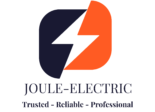Electrical Tips for Homeowners: Essential Safety & Maintenance Guide
Ever had a breaker trip while using the microwave? Or noticed an outlet getting warm after plugging something in?
Most people don’t think about their home’s electrical system until something stops working. However, learning a few basics now helps prevent expensive repairs and safety hazards later.
During an inspection, I do more than just check for problems—I focus on ensuring safety and efficiency for years to come.
Below, you’ll find key areas I evaluate and practical tips to help maintain a reliable electrical system.
1. Your Electrical Panel (The Heart of Your Home’s Wiring)
The electrical panel is the first thing I check because it reveals a lot about your system’s age and condition.
✅ Older panels (like Federal Pacific or Zinsco) have a history of failures that could create safety risks. If your home has one, I’ll point it out.
✅ I also inspect grounding, labeling, and breaker conditions to ensure everything is in proper working order.
✅ If you still have an older fuse box or an outdated panel, upgrading may improve both safety and efficiency.
2. GFCI & AFCI Protection (What They Are & Why They Matter)
GFCIs (Ground Fault Circuit Interrupters):
⚡ These protect against electrical shocks and are required in wet areas like bathrooms, kitchens, garages, and outdoor outlets.
⚡ If you don’t have them installed, I recommend adding them to meet modern safety standards.
⚡ You should also test GFCI outlets monthly—just press the TEST button to make sure they’re working.
AFCIs (Arc Fault Circuit Interrupters):
🔥 These help prevent electrical fires by detecting dangerous arc faults that standard breakers don’t catch.
🔥 AFCIs are required by the National Electrical Code (NEC) in new homes for circuits in bedrooms, living rooms, and other living spaces to reduce fire risks.
🔥 Are they required in all homes? No. But do they add another layer of safety? Yes.
📌 For more details on AFCI protection, check out the Virginia Residential Code (VRC) – AFCI Protection Standards
3. The Condition of Your Outlets & Switches
🔌 I check for loose, warm, or discolored outlets since these often indicate faulty wiring or overloaded circuits.
🔌 Two-prong outlets usually signal ungrounded wiring, which increases shock and fire risks.
🔌 Upgrading to tamper-resistant outlets—especially in homes with children—enhances safety and prevents accidental shocks.
🚀 This keeps it direct, clear, and active. Let me know if you’d like any more refinements!4. The Attic & Crawl Spaces (If Accessible)
If I can, I’ll check for exposed wiring, junction boxes without covers, or signs of overheating.
• Some homes have attic fans—they’re not required, but they help regulate temperature and extend the life of your roof.
• Loose, damaged, or exposed wiring in attic spaces should always be addressed, as they can become fire hazards.
5. Outdoor Electrical & Weatherproofing
🌧️ Outdoor outlets need proper protection to stay safe and functional. Ensure they are:
✅ GFCI-protected
✅ Covered with an in-use weatherproof box
💡 Other outdoor electrical issues I check for:
• Loose or rusted light fixtures
• Exposed or damaged wiring
• Old floodlights that may need upgrading to energy-efficient LED models or floodlights with built-in security cameras for added safety
6. Smoke Detectors & Carbon Monoxide Detectors
🔥 Smoke and CO detectors aren’t just a good idea—they’re required by code in most places.
🏡 Selling or buying a home? Check with local authorities to confirm that it meets minimum safety requirements.
🚨 Quick facts about smoke & CO detectors:
✅ Smoke alarms should be hardwired and interconnected in modern homes.
✅ Battery-operated alarms may need an upgrade to meet current safety standards.
✅ CO detectors must be installed near sleeping areas in homes with fuel-burning appliances like gas stoves and fireplaces.
📌 For more information on smoke alarm requirements, check out the Virginia Residential Code (VRC) – Smoke Alarm Installation Requirements
7. Whole-Home Surge Protection
⚡ Many people think surge protectors are just power strips, but a real surge protector is installed in your electrical panel.
🏡 With so many sensitive electronics in modern homes, a whole-home surge protector helps prevent damage from:
✅ Power surges from storms
✅ Utility issues (voltage spikes)
✅ Large appliances turning on/off
📌 Some jurisdictions now require surge protectors for new installations—check with your local authorities if you’re buying or upgrading a panel.
8. Bathroom & Kitchen Exhaust Fans
If your bathroom fan hums or rattles, it’s likely time for a replacement.
🌫️ Older fans struggle to move enough air, leading to:
❌ Excess humidity, which damages your home over time
❌ Mold growth, especially in bathrooms and attics
❌ Peeling paint and drywall issues caused by trapped moisture
🏡 Attic ventilation matters, too. During inspections, I check whether:
✅ The fan vents directly outside. Venting into the attic violates code and creates moisture risks.
✅ A proper exhaust pipe runs to a soffit vent or a roof-mounted cap. Therefore, this setup ensures efficient airflow and prevents moisture buildup.
A Quick Note About AI & Electrical Work
With smart home technology and AI-based diagnostics advancing, it may seem like electricians are becoming less essential.
Sure, AI can help identify certain electrical issues. It can provide data, suggest solutions, and even automate some troubleshooting steps. But when it comes to real-world repairs, troubleshooting, and installing new circuits, nothing replaces hands-on experience.
If something stops working, would you trust an app—or a professional who has handled these situations countless times?
CONCLUSION – No Pressure, Just Awareness
The goal isn’t to scare homeowners or push unnecessary upgrades—it’s to help you understand your home’s electrical system.
✅ If everything looks good, that’s great!
✅ If something needs improvement, now you know what to consider.
✅ And if you ever need help, that’s exactly what electricians are here for.
📌 For more details or to schedule a service, visit joule-electric.com or check out our service page.



